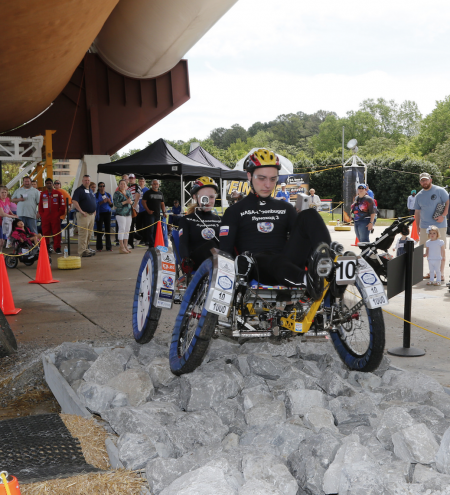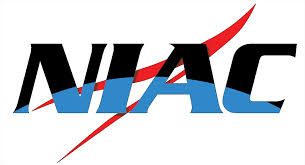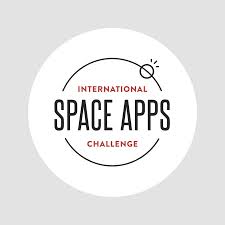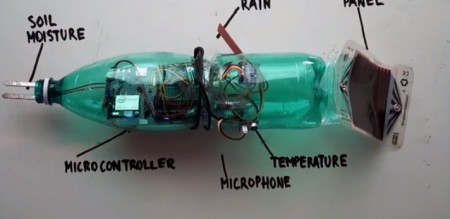May 17, 2015 – If NASA were only about human space flight one could argue that this, to many on the planet, would seem an unnecessary expenditure considering the many challenges humanity faces. But NASA is far more than missions to the International Space Station, or a future voyage to Mars. NASA science is rooted as much in the heavens as here on Earth.
NASA funds ground breaking innovation a number of ways, from sponsoring school contests focused on science and engineering, to awarding prizes for space apps, to soliciting public input for new ideas that can receive seed funding to advance the science and technology behind the agency’s mission. By using contests and encouraging crowdsourcing NASA is unlocking our global potential to contribute to both Earth and space science.
Take for example the recent NIAC proposals that received Phase 1 NASA funding. NIAC stands for NASA Innovative Advanced Concepts. The program states in its press release that it “aims to turn science fiction into science fact through the development of pioneering technologies.” About a week ago the agency selected 15 proposals deemed to produce transformational technology. Each of the concepts in Phase 1 received a $100,000 U.S. award to further develop their proposals over a nine-month period. If successful upon review Phase 2 funding of up to $500,000 could be made available to further develop the technology.
The funded projects cover advances in space habitation, materials, manufacturing, robotics, instrumentation, propulsion and computing. Among those receiving initial funding include the following concepts:
- a soft eel-like-robotic rover to explore the subsurface ocean of a moon like Europa drawing its power from local magnetic fields.
- an instrument-carrying twin-glider upper and lower atmospheric aerial vehicle that uses aerodynamics and the energy from wind currents to remain aloft indefinitely for studying our atmosphere or that of another Solar System object.
- a variety of inexpensive crawlers, hoppers and ball-shaped robots to map remote surfaces on Earth and other Solar System objects to develop high-resolution maps and explore for water and other valuable resources.
NASA’s recent 2015 International Space Apps Challenge, focused on stimulating technology advances for both use here on Earth and in space, named winners in six categories this week. The areas covered included mobile applications, software, hardware, data visualization and platform solutions. NASA received submissions from 133 locations. They reviewed 949 projects involving 13,702 participants. In the end six finalists were chosen.
- The Best Use of Data award went to NYSpaceTag, a New York-based submitter, who developed a keyword driven app to datamine NASA’s 26,000 datasets.
- The Best Use of Hardware award went to Valkyrie, a Bulgarian submission, that developed a smart glove and mobile device application that responded to gesture and voice.
- The Best Mission Concept award was given to Arachnobeea, a Cypriot submission, that developed a mobile-controlled drone that combined the characteristics of a bee, that is flight, and a spider, walking, to use in transporting cargo within an enclosed capsule to a specified location. In the presence of atmosphere the drone would fly. In a vacuum it would crawl.
- The Galactic Impact award went to CROPP, an Italian submission, standing for Cultures-Risks-Observation-and-Prevention-Platform. Sensor laden and able to communicate with mobile devices, CROPP is contained in a soda pop bottle (see below) and provides real-time field conditions on farms from detecting a plague of locusts to a sudden severe weather event.
- The Most Inspirational award went to a Nepalese team who submitted Tracking-and-Sensing-Through-Android Robotics as their contribution. This mobile robot platform incorporated on-board sensors linked to a smartphone with image processing apps for exploration of difficult to access sites. It would be interesting to find out if the device was used during the two earthquakes that struck the country in the last few weeks.
- And the People’s Choice Award, garnering 69,000 plus on-line votes, went to NATEV-Explorer, a submission from Kosovo. NATEV is the acronym for the Natural Events Explorer Project, a mobile app for smartphones with a 3D globe interface featuring imagery from earth observation satellites with crowd-sourced reports on real-time natural disasters and potential threats posted and accessible by touch.
All winners have been invited as NASA’s guests for the September launch of the next SpaceX supply mission to the International Space Station.
But the awards and grants mentioned above are just the tip of the NASA iceberg. Each year the agency launches a challenge to high schools and colleges around the world. This year the theme chosen was build and race a rover. Fastest to assemble and navigate a prescribed track would win. The competition took place in April at the U.S. Space & Rocket Center in Huntsville, Alabama.
Team entries came from 18 U.S. states, Puerto Rico, Germany, India, Mexico and Russia.
In university competition first prize went to Team Russia of Moscow (see image below). In high school competition, University Gardens High School in San Juan,Puerto Rico took the gold.
Best design award went to Auburn University and Parish Episcopal School of Dallas in their respective categories.
Rhode Island School of Design won for design innovation with a unique wheel technology.
The Featherweight Award for the lightest rover went to University of Puerto Rico and Vocational High School Teodor Aguilar Mora, also of Puerto Rico.
And the Telemetry Award went to Pittsburg State University in Kansas.
Creating vision and building expertise to solve both earthly and space problems is best illustrated by these NASA activities. It makes you wonder why in the United States Congress flat-lined the agency’s Earth sciences budget this year in favor of human spaceflight projects. What will be the long-term impact of such short-term thinking? That’s why I raised the issue recently suggesting that NASA needs crowdfunding to support one of its most essential activities, helping us through science and technology to better understand our Earth and its surroundings. That’s because NASA isn’t just about space and rockets to Mars. It is very much about our planet, tis present and future.












